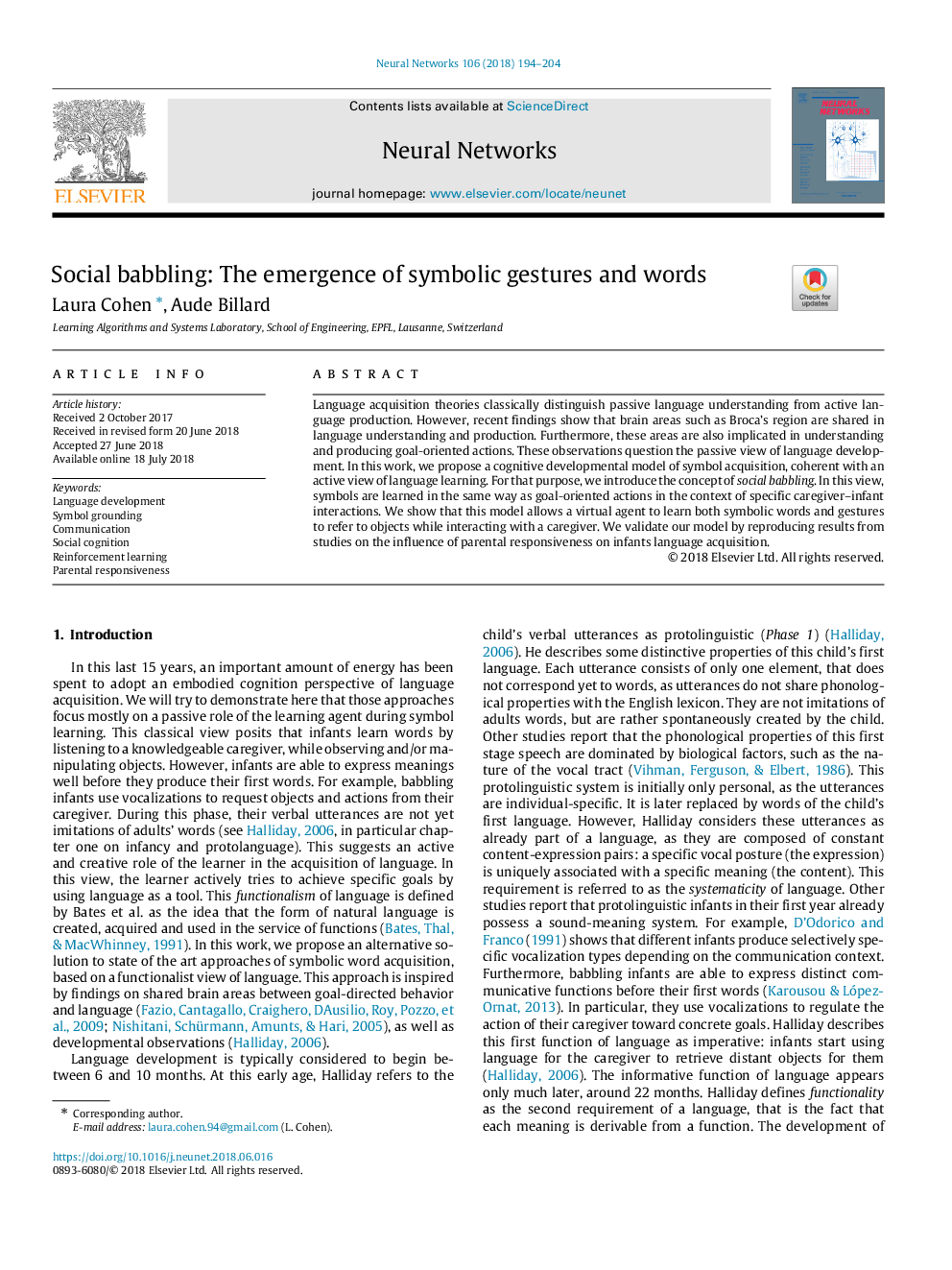| Article ID | Journal | Published Year | Pages | File Type |
|---|---|---|---|---|
| 6862819 | Neural Networks | 2018 | 11 Pages |
Abstract
Language acquisition theories classically distinguish passive language understanding from active language production. However, recent findings show that brain areas such as Broca's region are shared in language understanding and production. Furthermore, these areas are also implicated in understanding and producing goal-oriented actions. These observations question the passive view of language development. In this work, we propose a cognitive developmental model of symbol acquisition, coherent with an active view of language learning. For that purpose, we introduce the concept of social babbling. In this view, symbols are learned in the same way as goal-oriented actions in the context of specific caregiver-infant interactions. We show that this model allows a virtual agent to learn both symbolic words and gestures to refer to objects while interacting with a caregiver. We validate our model by reproducing results from studies on the influence of parental responsiveness on infants language acquisition.
Keywords
Related Topics
Physical Sciences and Engineering
Computer Science
Artificial Intelligence
Authors
Laura Cohen, Aude Billard,
